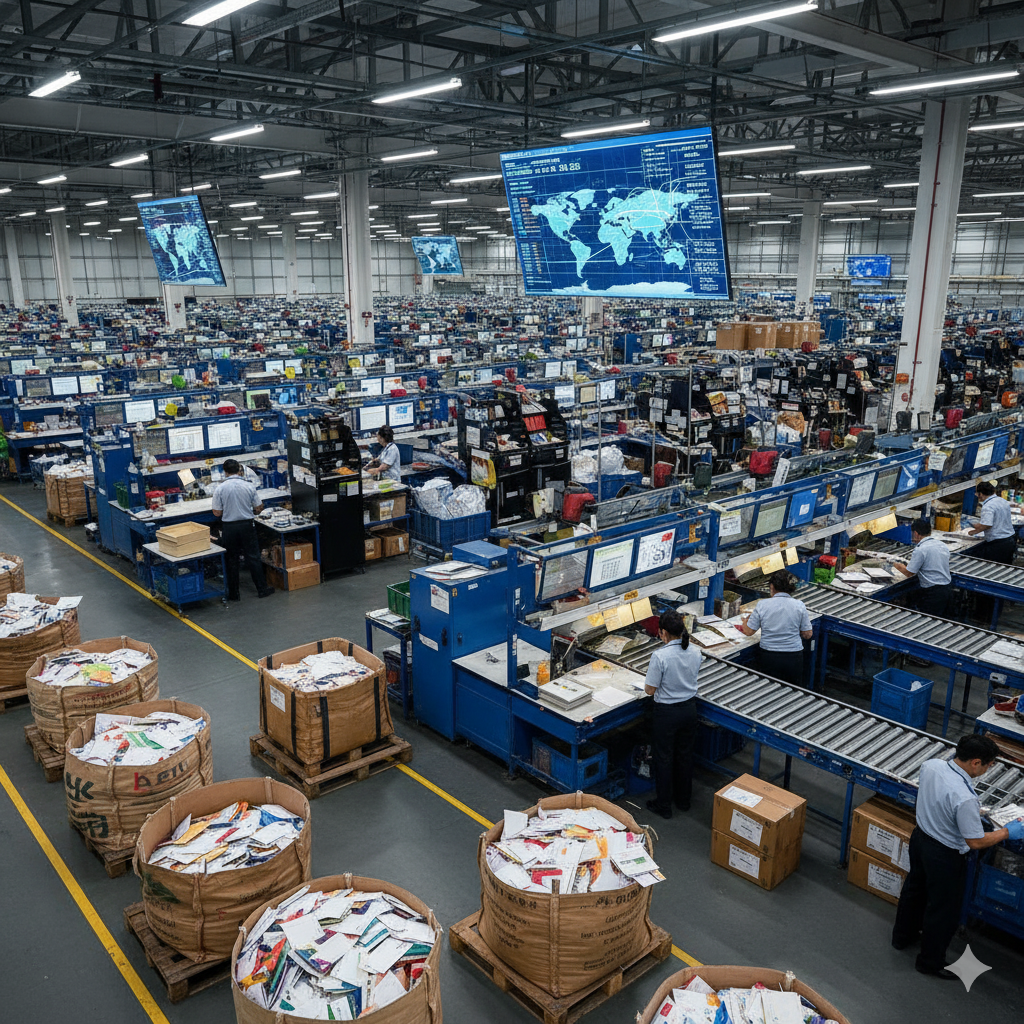Running a business can mean wearing a dozen hats at once. But if shipping isn’t one of the things you’re thinking strategically about, you may be overlooking opportunities to grow. Fast delivery grabs attention, sure. But when optimizing your shipping operations, there’s far more under the hood that most business owners never hear about—unless they work with a logistics expert.
These are the shipping realities that move the needle. The ones that separate businesses feeling stretched thin from the ones scaling smart. Let’s break them down.
1. Carrier Reliability Often Matters More Than Speed
Business owners tend to focus on how fast a package gets to the customer, but what really matters is whether it shows up when it’s supposed to. A shipment that consistently arrives in three days builds more trust than one that’s supposed to arrive in two but ends up late half the time.
Reliability keeps your order management and fulfillment workflow steady. It reduces last-minute scrambles, frustrated customer emails, and refund requests. You know what to expect, your team knows what to expect, and—most importantly—your customers do too. When working with accurate delivery times, you can plan inventory movement, set better service levels, and stop wasting time on damage control.
Speed is nice. Predictability is non-negotiable.
2. Packaging Impacts Your Profit
Most business owners think about packaging in terms of branding or protection. Fewer realize it’s directly tied to the cost of every shipment. Oversized boxes, inefficient materials, and even excessive airspace can all trigger higher dimensional weight charges—costs that scale quickly with order volume.
On international orders, a box that doesn’t meet standard expectations might get flagged for inspection, adding delays that could have been avoided.
The smartest operators build packaging into their overall inventory and shipping strategy. They look at metrics, consolidate where it makes sense, and fine-tune box sizes based on actual product dimensions—not what happens to be in stock that day. That’s how you protect margins and create a more efficient shipping operation without cutting corners.

3. Most Customs Delays Are Preventable
Customs delays aren’t as mysterious as they seem. In most cases, shipments get flagged not because of inspections but because of missing or incomplete paperwork. If your commercial invoice is vague and the declared value is suspiciously low, your HS code is off, or your product description looks confusing, it will slow things down.
These hold-ups can stall your delivery process and throw off transit —especially when managing high-volume shipments or operating across multiple markets. When things get bottlenecked at the border, you’re stuck reacting instead of running your supply chain efficiently.
Solid documentation is a core part of an optimized shipping process. Getting it right the first time saves time, prevents rework, and keeps customers happy on the other end.
4. A Single Carrier Is a Single Point of Failure
Working with one carrier might feel easier. There’s one account, one integration, and one point of contact. But that simplicity can quickly turn into risk the moment something goes wrong. Rate hikes, strikes, capacity shortages, and even weather delays can leave you scrambling for a backup that doesn’t exist.
Diversifying your carrier mix is about being flexible. When you have options, you can shift based on delivery speed, package size, destination, or seasonal demands. Some providers are better for cross-border shipping. Others shine on last-mile coverage. The key is knowing where each one fits and building a system that adapts instead of breaks.
Smart consolidation, multiple service levels, and regional flexibility give you more control over both cost and performance and fewer surprises.

5. Tracking Transparency Protects Your Brand
When customers ask, “Where’s my order?” it’s not always because they’re impatient. It’s because they’re unsure. And that uncertainty can become a problem if you can’t give them a clear enough answer.
Near real-time tracking is one of the simplest ways to protect brand trust. Customers feel in control, even when things slow down. Internally, it can reduce tickets, improve customer experience metrics, and keep your support team focused on more complex issues.
But this goes beyond basic status updates. The best shipping providers offer near real-time data integrations through API or dashboard tools that fit directly into your order management system. That means fewer handoffs, better workflows, and faster answers—without your team digging through multiple platforms just to find a tracking number.
Visibility doesn’t just help the customer. It helps your team work smarter and keeps your brand from absorbing the fallout when delays happen.
6. Cheapest Isn’t Always Best
Low-cost shipping looks appealing until the hidden costs start stacking up. Packages that arrive late—or don’t arrive at all—can lead to a flood of customer service inquiries. And what seemed like savings on paper quickly turned into damage control.
The most cost-effective shipping strategy isn’t always the one with the lowest base rate. It’s the one that balances price with reliability, transit times, and delivery consistency. Paying a little more for efficient shipping often results in fewer issues downstream and better outcomes for your bottom line.
7. Regional Fulfillment Can Slash Delivery Times
If all your inventory ships from a single warehouse, every order has to travel the same distance no matter where your customers are. That model can slow down delivery and drive up transportation costs.
Distributing products across regional fulfillment centers brings your inventory closer to your customers. It shortens delivery times, trims shipping costs, and adds resilience to your supply chain. And with more innovative order management systems, you don’t need to be an enterprise giant to make it work. Even modest consolidation—say, adding a second fulfillment location in another region—can noticeably improve performance.
Fast, predictable shipping doesn’t require speed records. It just takes better placement.

8. Cross-Border Success Depends on the Local Network
You can do everything right up to the border then lose trust in the last mile. A weak local delivery network in the destination country can cause missed delivery windows and unhappy customers.
International order fulfillment doesn’t end at customs. It depends on which providers are trusted locally and how well your logistics partner integrates with them. Reliable last-mile coverage is what turns a cross-border shipment into a successful delivery. It also gives you more control over transit times and shipping options in each region.
If you’re scaling globally, your delivery process needs to go all the way—not just part of the way.
9. Your Shipping Policy Is a Sales Tool
Most customers read your shipping policy, especially first-time or international buyers. They might hesitate if the details are vague, missing, or hard to find, which can be the difference between a completed order and an abandoned cart.
Clear, upfront shipping policies can be helpful and persuasive. Delivery timelines, return instructions, and who’s responsible for duties or taxes all shape the buyer’s level of trust. A well-crafted policy sets expectations for customers, so there’s little to lead to misunderstandings.
Don’t treat this as fine print. Treat it like part of your sales strategy.
10. Data Beats Gut Feelings Every Time
Shipping performance isn’t something you can guess your way through. Every order you send generates useful cost, speed, carrier reliability, and post-purchase satisfaction metrics. Analyzing that data by region, carrier, or product type makes it easier to spot inefficiencies and make smarter decisions.
Maybe one provider’s transit times look good on paper, but customer complaints say otherwise. Or maybe your most cost-effective option is causing delays in a key market. Without visibility into the numbers, you’re operating in the dark.
A data-driven approach strengthens your supply chain, improves service levels, and gives your team a clearer workflow for ongoing improvement. Over time, it’s one of the best ways to boost performance without guesswork or waste.
What Smarter Shipping Looks Like with ePost Global
ePost Global is built for businesses that want to ship smarter, not harder. We help high-volume shippers, eCommerce brands, and international retailers streamline operations, reduce costs, and improve customer satisfaction with real-world, scalable logistics solutions. Whether you need customs support, access to regional fulfillment centers, or smarter last-mile delivery in your destination country, we can help you build a shipping strategy that actually works.
We work with you to:
- Diversify carrier networks
- Optimize packaging and routing
- Automate tracking and notifications
- Analyze your shipping performance
- Reduce customs delays and surprise fees
Backed by decades of international shipping expertise, we help growing brands simplify the complex and scale without shipping getting in the way.
Optimized Shipping Starts Here
Optimized shipping isn’t about chasing the fastest option or copying what Amazon does. It’s about building a logistics strategy that makes sense for your business, your margins, and your customers. The most successful companies treat shipping like a core part of their customer experience, not just an operational task.
If you’re ready to stop guessing and start optimizing, it might be time to talk to a partner who knows what they’re doing.
Let ePost Global show you how smarter shipping drives real business results. Contact us today.




